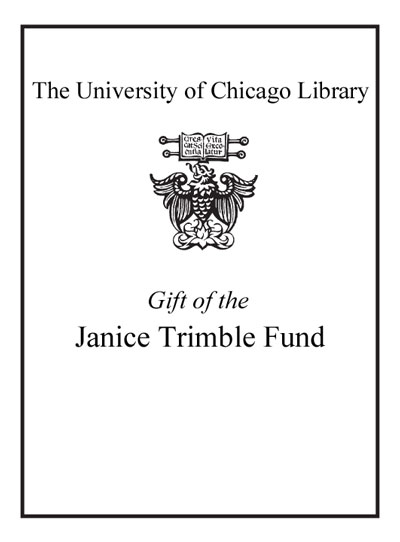The Routledge companion to puppetry and material performance /
Saved in:
| Imprint: | Abingdon, Oxon ; New York, NY : Routledge, 2014. |
|---|---|
| Description: | xxiv, 351 pages ; 26 cm |
| Language: | English |
| Subject: | |
| Format: | Print Book |
| URL for this record: | http://pi.lib.uchicago.edu/1001/cat/bib/10075987 |
Table of Contents:
- List of Figures
- Notes on Contributors
- Acknowledgments
- Foreword
- Introduction
- Part I. Theory and Practice: Edited And Introduced
- Section I. Theoretical Approaches to the Puppet
- 1. The Death of "The Puppet"?
- 2. The Co-Presence and Ontological Ambiguity of the Puppet
- 3. Playing with the Eternal Uncanny: The Persistent Life of Lifeless Objects
- Section II. Perspectives from Practitioners
- 4. Visual Dramaturgy: Some Thoughts for Puppet Theatre-Makers
- 5. Puppetry, Authorship, and the Ur-Narrative
- 6. Petrushka's Voice
- 7. "Clouds Are Made of White!": The Intersection of Live Art and Puppetry as an Approach to Postdramatic Children's Theatre
- 8. Movement Is Consciousness
- 9. The Eye of Light: The Tension of Image and Object in Shadow Theatre and Beyond
- 10. The Third Thing
- 11. Post-Decivilization Efforts in the Nonsense Suburb of Art
- Part II. New Dialogues with History and Tradition: Edited and Introduced
- Section III. Revisiting History
- 12. Making a Troublemaker: Charlotte Charke's Proto-Feminist Punch
- 13. Life-Death and Disobedient Obedience: Russian Modernist Redefinitions of the Puppet
- 14. The Saracen of Opera dei Pupi: A Study of Race, Representation, and Identity
- 15. Puppet Think: The Implication of Japanese Ritual Puppetry for Thinking through Puppetry Performances
- 16. Relating to the Cross: A Puppet Perspective on the Holy Week Ceremonies of the Regularis Concordia
- Section IV. Negotiating Tradition
- 17. Traditional and Post-Traditional Wayang Kulit in Java Today
- 18. Korean Puppetry and Heritage: Hyundai Puppet Theatre and Creative Group NONI Translating Tradition
- 19. Forging New Paths for Kerala's Tolpavakoothu Leather Shadow Puppetry Tradition
- 20. Integration of Puppetry Tradition into Contemporary Theatre: The Reinvigoration of the Vertep Puppet Nativity Play after Communism in Eastern Europe
- Part III. Contemporary Investigations and Hybridizations: Edited and Introduced
- Section V. Material Performances in Contemporary Theatre
- 21. From Props to Prosopopeia: Making After Cardenio
- 22. "A Total Spectacle but a Divided One": Redefining Character in Handspring Puppet Company's Or You Could Kiss Me
- 23. Reading a Puppet Show: Understanding the Three-Dimensional Narrative
- 24. Notes on New Model Theatres
- Section VI. New Directions and Hybrid Forms
- 25. From Puppet to Robot: Technology and the Human in Japanese Theatre
- 26. Unholy Alliances and Harmonious Hybrids: New Fusions in Puppetry and Animation
- 27. Programming Play: Puppets, Robots, and Engineering
- 28. Return to the Mound: Animating Infinite Potential in Clay, Food, and Compost
- Index

